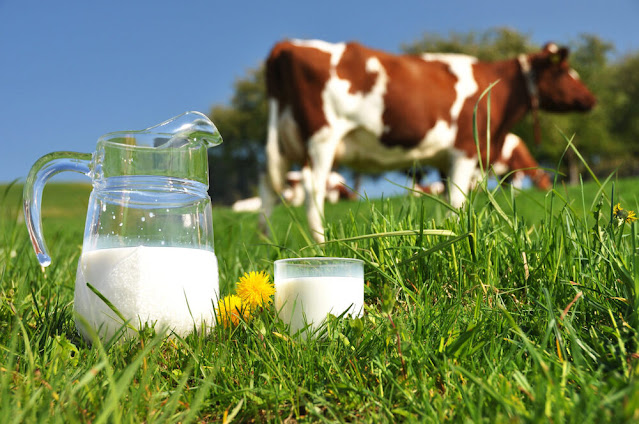Gone are the days when you only had to choose between two percent and skim milk to pour over your breakfast cereal. Food manufacturers have even created lactose-free milk to cater to the growing number of people who experience lactose intolerance.
Image Credit: Getty Images/iStockphoto
Lactose-free milk is a good substitute
For the lactose intolerant, this replacement
can satisfy their needs

Lactose is a sugar found in dairy milk. A
certain amount occurs naturally in cow’s milk. It can also be found, in smaller
traces, in goat’s milk and sheep’s milk. To put it simply, lactose free-milk is
milk without lactose.
Lactose-free milk is cow milk with added
natural enzyme lactase, an enzyme that breaks down the milk-sugar lactose into
more easily digestible sugars, glucose and galactose, so it’s easier to digest.
Milk does have lactose, which is the naturally occurring sugar. The lactose in
milk is hard to digest for some people (lactose intolerant), so adding the
lactase enzyme breaks down the lactose into sugars making it more digestible
for them. Therefore, since the lactose is converted to sugar, the term “lactose
free”.

Is lactose-free milk real milk?
Lactose-free milk is real milk. The enzyme
lactase has been added to break down the lactose, the natural sugar found in
milk. Lactose-free milk and other dairy products allow people with lactose
intolerance to enjoy drinking milk and eating dairy foods. Lactose-free cow’s
milk, offers strong health benefits.
Nutrients:
Lactose-free milk contains the same amount of calcium, vitamin A, vitamin D and
protein as regular milk and dairy products.
Health benefits: Drinking
lactose-free milk can prevent the symptoms of lactose intolerance, Helps in the
development of strong bones and teeth.
Helps build and repair muscle tissue Vitamin
D –helps in the absorption of calcium. Important for good vision, healthy skin
and immune system.
Plays an important role in nerve function,
muscle contraction and blood clotting.
Tips to include in diet: Add
fortified lactose-free milk to your whole grain cereal for breakfast. As a
snack, drink a glass of lactose-free milk every day. Lactose-free milk can also
be used in soups, milkshakes, smoothies, lactose-free sauces, salad dressings, stews
and desserts.
Disadvantages
of lactose-free milk :
Despite its benefits, there are also a few
negatives to drinking lactose-free milk. Lactose is a natural sugar, so
manufacturers may add sweeteners to certain lactose-free products to replace
it. However, this step is usually unnecessary since lactase breaks down the
sugars in lactose, resulting in an overall sweeter taste.
Doctors always recommend a balanced diet
which includes as few refined foods as possible. But technically,
both lactose-free milk and regular milk are considered processed foods because
they’re treated with heat and chemicals to make them safe for consumption. In
fact, lactose-free milk sometimes requires more extensive processing than
regular milk.
It’s also important to note that eating
processed foods, including lactose-free products, while on your
period could aggravate your bloating symptoms.
Many of the disadvantages of drinking
lactose-free milk are the same as with regular milk. New research is linking
dairy products to cases of cancer and heart disease. So whenever possible, it’s
best to make water your drink of choice to stay healthy and hydrated.
Is lactose-free the same as dairy-free?
Lactose-free milk is still made from cow’s
milk, so it is not the same as dairy-free milk. If you have a dairy allergy, do
not eat any type of dairy, including those labeled “lactose-free.”





























0 comments:
Post a Comment
if you have any questions, Plz let me know @ crossroads919@gmail.com